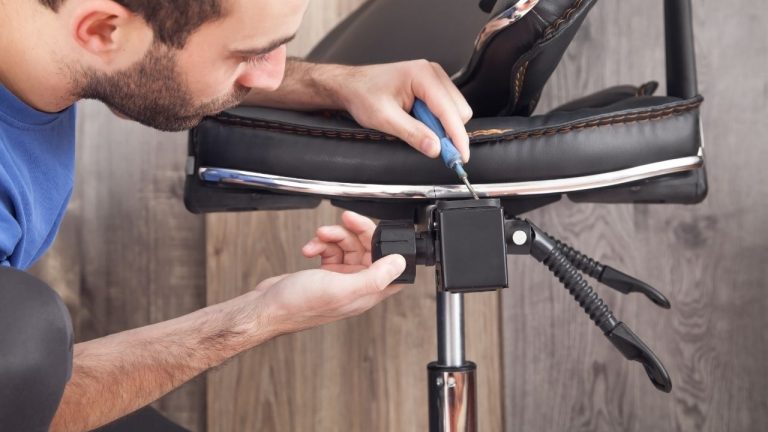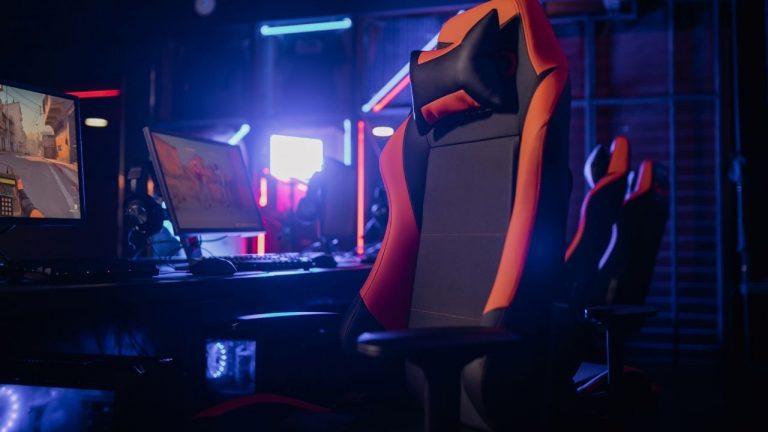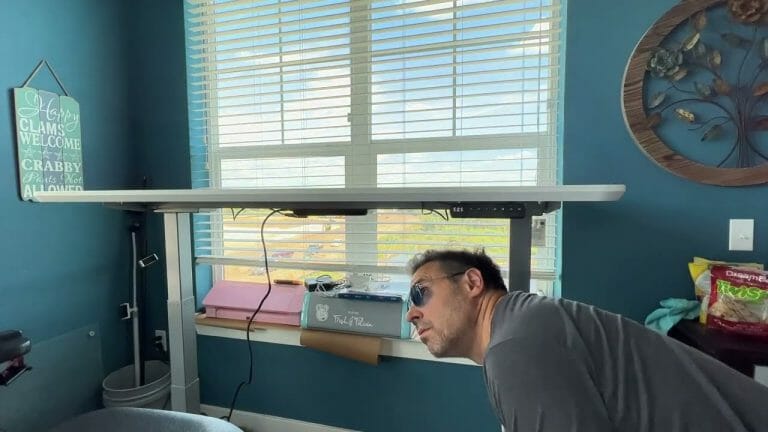Cheap Desk Materials: Which One is Better?
Desks are the basics of building an office from scratch, making an extension to an existing one, or simply creating a work environment in your home. If you are on a budget, then your priority is functionality with the minimum level of aesthetics, and for that, you need to know which materials make the best desks for your purposes.
Wood, metal, and glass all have their own cheap materials, and there are variations on them. Metal desks are the most durable and strong, glass desks are the most aesthetic, and wooden office desks are a balance of both.
Let’s dive deep into the variations, prices, and functionality to figure out what materials are best for your particular use.
Cheap Wood And The Variations
Wood is the first choice of material for building office desks. It is a classic choice of material and has been used for a long time. Not all types of wood are of the same quality or price. There are differences in the trees that these woods came from.
Though it is true that the major concern for quality and price is what type of tree the wood is coming from, that is only for hardwood. In modern times, there are many cheaper options. I will guide you through the different types of cheap wood materials.
The three types of cheap wood that are best for making office desks are:
- Particleboards
- Medium-density fireboard (MDF)
- Plywood
Each type of wood has its distinctive features, with advantages and disadvantages. We will compare them all for you so you can choose the one that’s best suited for your needs.
I will not be talking about plain wood in this article because this one is about cheap options. And all engineered wood is cheaper than its counterparts in old-style wood direct from the tree.
Particleboards
Particleboards are composite wood materials that are built by using particles or fine shards of wood. The particles are put together using pressure and gluing chemicals. These boards are the most common for using office desks.
Medium-Density Fireboards
In a sense, medium-density fireboards are the same as particle boards. The difference is in density and in the process of making. MDF is made with finer shards than particle boards.
Also, these boards are pressured hot while particle boards are pressured cold. This heat allows the activation of different chemicals that are put in the materials for MDF.
Plywood
Plywood is a material that is made by gluing different numbers of layers of wood veneer together. The number of layers defines the width and weight of the plywood.
Wood fiber sheets are bound with resin to create plywood. There are different types of plywood. Some common varieties are:
- Hardwood plywood
- Softwood plywood
- Tropical plywood
- Flexible plywood
- Decorative plywood
Comparisons
| Particleboards | Medium-Density Fireboard | Plywood |
|---|---|---|
| Made of composite materials and pressed cold | Made of finer composite materials and pressed hot. | Made by joining multiple layers upon one another. |
| Cheapest in price. | Cheaper than plywood but expensive than particle boards | Comparably less cheap than the other two but still cheaper than solid wood. |
| Most fragile | Stronger than particle board and similar in strength to plywood. | Debatably more durable and stronger than the other two. |
| Vulnerable to water | Vulnerable to water | Less vulnerable to water |
| Has medium degrees of freedom of design and customization. | Best for designing and customization. | Not mainstream for creative designs. |
| Has chemicals that repel pests | Has chemicals that repel pests | Does not have chemicals to repel pests and is thus vulnerable to it. |
| Toxic sawdust. The extra protective layer is applied. | Toxic sawdust due to formaldehyde in the chemical mixture. Has a protective layer. | Does not contain toxic chemicals. |
Now that we know what each of the three types of cheap wood is, it’s time to compare them. I’ll compare these three in terms of various features and functions so you can pick the best one for you.
Price
When it comes to price, the cheaper ones get the upper hand. Out of these three types of wood, particleboards, which are also known as chipboards, are the cheapest in all markets.
It is because it requires fewer exclusive materials to be made and the production process is faster and cheaper. This does have an impact on the final product.
The second place for being the cheapest is the medium-density fireboard. This is because they are similar in terms of building with chipboard. However, there are differences in the production process that require more time and cost more money. This makes the boards cost more.
Plywood is comparably the least cheap option out of the three. It is because plywood uses sheets of wood. These sheets are made from the same type of wood. Even if there are differences in sheet types, plywood will still cost more due to its production process and material cost.
Durability
The very next thing to consider after the price is the durability of the wood. There are clear differences in durability and longevity between the three types.
Particleboards are heavier than normal wood boards, but they also break more easily. The amount of stress particleboards can withstand is quite low. Due to this fact, particle boards are not used for building heavy furniture.
Medium-density fireboards are comparable to and more durable than particle boards. There are two reasons for that. Firstly, the density of MDF is higher than that of particle boards. The machine used for building MDF uses more pressure and heat, which makes the MDF denser.
Second, MDF uses finer shards that let the chemical work more efficiently to make the bond even stronger.
Plywood comes right on top of the list when it comes to durability. It is because of their unique design that separates the layers. However, in certain cases, MDF comes very close to matching the durability of plywood.
Plywood has a structural advantage that MDF does not. The outer layers of plywood experience more pressure than the inner layers. This means that by the time the pressure reaches the opposite side, it reduces. This gives the boards more durability.
Water Resistance
Both particle boards and medium-density fireboards are more susceptible to water and moisture damage than normal wood. It is because these boards have pores in them that the water gets sucked into.
These boards absorb water faster than plain wood, and the damage is also greater because water damages the chemicals inside the boards that are supposed to keep the shards together. If you live in a place where there is too much moisture, then these boards will last less time for you.
Plywood comparably absorbs less water due to its still using layers of wood.
However, this problem can be solved quite easily. If the furniture is covered in a waterproof coating, it will increase the water resistance of the furniture.
Also, I assume you are not planning an office where water gets on the floor. So, it is highly unlikely that your desk will get water damage in the first place. And with the protective coating, moisture is also not an issue anymore.
Design And Customization
Particleboards and MDF provide smooth, even surfaces. MDF offers smoother surfaces than both particle boards and plywood.
MDF is very consistent in texture and can be colored with different types of coating. These coatings can even be designed to make lovely patterns. Particleboards offer the same type of service with different coatings.
Particleboards and MDF are more customizable when it comes to sizing them to your needs. I have made desks with plywood, MDF, and particle boards. The comfort that I had while using MDF and particle boards is without a doubt higher than plywood.
I could cut out exactly the proportions that I needed from these. I was afraid that cutting plywood to thin proportions wouldn’t be a wise choice as the layers could come off. However, I was proven wrong. Plywood can be used in moderate proportions without any hassle, and it still holds pretty tight.
Pest Protection
Particleboard and MDF are both composite materials. While building them, chemicals to prevent pests can be put into the wood, which gives it protection from pests. Plywood, however, does not have the same feature.
Health Hazard
One thing that I was pretty shocked about is that sawdust from both particleboards and MDF can be toxic. The reason is quite simple. While making these boards, many chemicals are added, and some of them are harmful to health. For example, formaldehyde is toxic.
When these boards are cut, the chemicals that are in the dust are released. If the dust is inhaled, then it can cause health issues. Also, these chemicals are released from the boards in the form of gases if any portions are left open without a coating.
However, if you maintain health regulations while working with these and ensure that the coating isn’t coming off, you can use them safely.
Cheap Metal Desks
After wood, the next thing that comes to mind when it comes to the list of highly popular materials for building office desks is stainless steel. Stainless steel is an alloy of carbon, iron, chromium, and other metals. This makes it durable and free from corrosion thanks to the chromium.
However, stainless steel is not the only metal used to make desks. Other mainstream metals such as iron, carbon steel, and aluminum are also popular choices.
Most of the time, metal is used to make the structure and pillars of the desk. It is quite possible to make whole desks out of metal, but a combination of wood and metal is preferred by most.
The design of the metal for these parts is normally hollow, circular, or hollow square-shaped. This design provides better strength and durability to the material.
Metal desk materials are also aesthetic with their metallic shine. If you use materials that do not Oxidize over time, like iron, then you will have a wonderful-looking metallic desk.
But if you are planning to buy those materials anyway, my advice is that you paint them fully. The paint will protect your metallic materials from oxidizing and will increase their longevity.
Low-Cost Glass Desks
Glass desks normally consist of a platform made of either wood or steel, and a plain sheet of glass is laid down on the platform to create the whole desk.
Normally, glass desks are used for aesthetic sense or personal preference. For a cheap glass desk, all you need to do is measure the size of your platform and then buy a glass sheet to match.
There are different types of glass, and they come in different thicknesses. It is wise to buy medium-thick glass within your budget for better performance and longevity.
There are a few core distinctions between using a glass-surface desk and a wood or metal-surface desk. The first one is durability. Glass is fragile, and you never know what will break it. From the tip of something sharp to something just slightly heavy, you can damage the glass easily. This is the reason that many offices do not like to use glass on their work desks.
One more thing is the headspace of using glass desks. If you place your desktop on a glass desk, then you will see through the glass and the cables will be visible. This is a problem for some people, while others like to decorate the inner part of the desk because of the reason that the glass is see-through. The moral of the story is that if you want to use a glass desk, you must maintain it both on and beneath the main surface.
But there are quite a few benefits to using glass. Glasses are aesthetic and have an appeal to them. I love a good reception booth with an aesthetic glass table.
Also, glass tables are easy to clean. You do not have to worry about anything sticking to the surface of drinks ruining the texture. You can just wipe it off and be done with it in a moment.
Not to mention, glass sheets can be pretty cheap and have a variety of options to choose from. Most people won’t feel the difference at first glance, and that’s a good thing if you are planning to buy one on a low budget.
Choosing Compound Desks
Desks that use multiple types of materials often offer the most functionality. Metal is lighter than wood and is also stronger. That’s why it is used as the base material for large desks.
Wooden and glass surface both functions well on a well-built base. If you want a desk with a lot of storage space, then you can add drawers and cabinet space under the surface as per your requirements.
Also, it’s not mandatory to show the use of multiple materials anyway. A good old-fashioned, vintage-looking wooden desk can have metal pillars supporting it from the inside. While a glass surface can be set just over the wooden or metal surface to have the functionality of both at the same time.
Combinations are endless, all you need is to decide what you want for your desk. But remember, buying too many cheap materials but not using them fully will eat away at your wallet as well. So, fix what you want to build first and then choose the materials.
Final Words
There are differences in preference from one person to another. Some prefer clear glass desks, while others go the extra mile for wooden ones. Now that you know what your options are, you can choose the one that’s best suited for you.
On a budget, these options will give you moderate functionality and longevity. But if you want to increase the budget and go for something of higher quality, then check out my guide on expensive desk materials.


![How Office Chair Hydraulics Work? [Easy Explanation]](https://homethereby.com/wp-content/uploads/2022/04/How-Office-Chair-Hydraulics-Work-768x432.jpg)




![Flexispot EC1 Standing Desk Review [Best & Worst]](https://homethereby.com/wp-content/uploads/2022/10/motorized-standing-desk-768x432.jpg)